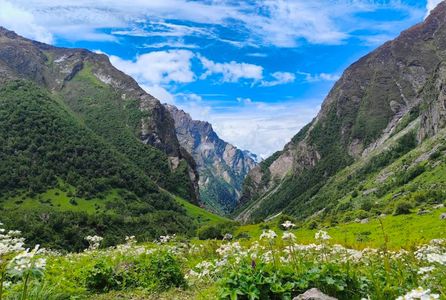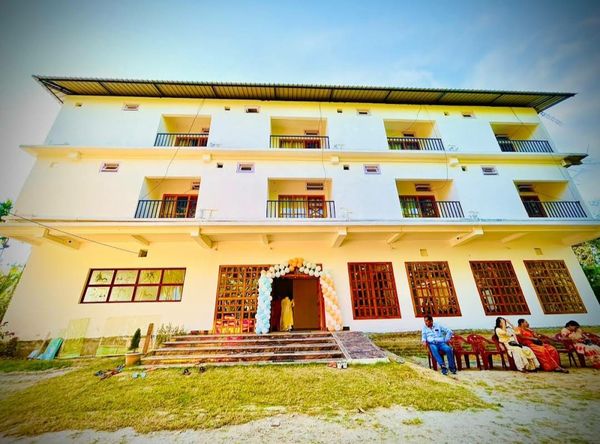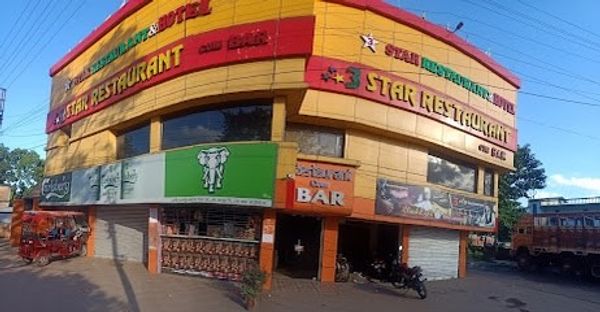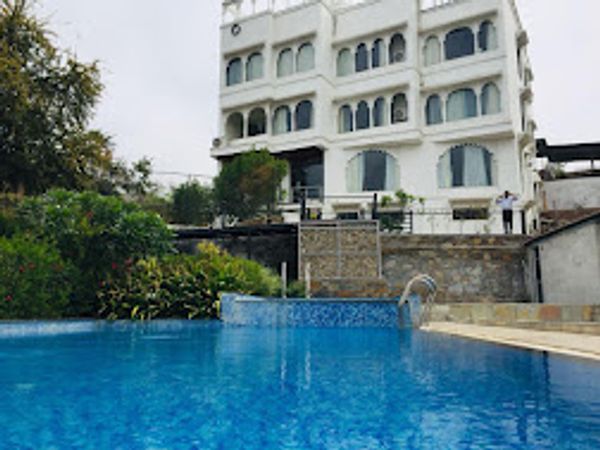The Valley in Bloom: Monsoon Flowers You Can Spot During the Trek
 Deepanshu Negi
22 Jul, 2025
10 mins read
17
Deepanshu Negi
22 Jul, 2025
10 mins read
17

The monsoon season turns the mountains and valleys into a magical place. With the first drops of rain, nature wakes up. Dry paths become green trails, and the air is filled with the scent of fresh soil and blooming flowers. For nature lovers and trekkers, this is the best time to explore the beauty of wildflowers.
One of the most beautiful places to witness this natural wonder is the Valley of Flowers in Uttarakhand, India. Every year, during the monsoon, this valley comes alive with hundreds of flower species. In this article, we will explore the types of monsoon flowers you can spot during the trek and what makes them special.
What Makes Monsoon Treks Special
Monsoon treks offer not just scenic beauty but also a sense of peace and connection with nature. As you walk through misty trails and hear the sound of raindrops on leaves, every moment feels magical.
The Valley of Flowers trek, in particular, offers an unforgettable experience during this season. Located in the Chamoli district of Uttarakhand, this trek takes you through lush meadows, wooden bridges, and flowing streams. With every step, you witness a new shade of nature’s palette, making it one of the most rewarding treks during the monsoon. Whether you're an experienced trekker or a first-time visitor, the Valley of Flowers in the rainy season is sure to leave you in awe.
Best Time to Visit for Monsoon Flowers
The ideal time to visit the Valley of Flowers is between July and early September. This is when the flowers are in full bloom. Each week, different species bloom, so the valley keeps changing its color and texture. The earlier weeks in July have more snow-melt flowers. August is the peak for blooming, and September starts to see fading flowers but with clearer skies.
Types of Flowers You Can Spot
1. Blue Poppy
The Blue Poppy is one of the most loved flowers in the valley. It has soft blue petals and a golden center. This flower grows in the higher altitudes and can often be seen dancing in the cool breeze. It is rare and often called the Himalayan Blue Poppy.
2. Cobra Lily
This unique plant gets its name from its shape, which looks like a cobra with a hood. The dark purple flower is striking and grows in moist and shady areas. It is not only beautiful but also fascinating to observe up close.
3. Brahma Kamal
Brahma Kamal is considered a sacred flower in India. It blooms mostly at night and is found at higher altitudes. The flower is large and white, with thick petals. It is the state flower of Uttarakhand and often seen near Hemkund Sahib, a sacred site close to the Valley of Flowers.
4. Anemone
Anemone flowers come in pink, purple, and white colors. They are simple, small flowers that grow in groups. These flowers add a touch of brightness to the green valley and are easy to spot along the trail.
5. Marsh Marigold
Marsh Marigolds are yellow flowers that grow near water streams and marshy areas. Their bright color makes them stand out. They bloom early in the season and are loved by bees and butterflies.
6. Himalayan Balsam
This flower is common during the monsoon season. It grows in large numbers and covers the valley in shades of pink and purple. The Himalayan Balsam is tall and has soft petals. It is also known as “Touch-Me-Not†because of the way its seed pods burst when touched.
7. Primula
Primula flowers are delicate and come in many shades like violet, pink, and white. They usually bloom in clusters and cover the rocky parts of the trail. These are among the first flowers to bloom as the snow melts.
8. Bellflower
Bellflowers, also called Campanula, have a soft bell-like shape and grow in shades of blue and purple. They often bloom along the sides of the path and attract many insects and butterflies.
9. Dactylorhiza Hatagirea
This orchid species grows in moist places and has a beautiful mix of purple and white on its petals. It is also known for its medicinal properties. Spotting it is a treat for those who appreciate rare mountain flowers.
10. Wild Rose
Wild Roses are seen near the entrance of the valley. They have soft pink petals and a sweet fragrance. Though not as rare as other flowers, they are a lovely welcome into the floral paradise.
Tips for Spotting Flowers During the Trek
Start Early in the Morning
Early morning is the best time to see flowers fresh with dew. The light is soft, and the weather is cooler, which makes trekking easier.
Walk Slowly and Observe
Take your time while trekking. Most flowers are small and grow close to the ground. Look around carefully, especially near rocks, trees, and water sources.
Carry a Camera or Phone
Monsoon flowers are colorful and make great photos. Make sure your camera or phone is protected from rain. You can also use a macro lens to take close-up shots of flowers.
Wear Waterproof Gear
The trail can be wet and muddy. Carry a raincoat, waterproof shoes, and a cover for your bag. This will help you enjoy the trek without worrying about getting wet.
Respect Nature
Do not pick flowers or disturb the plants. The Valley of Flowers is a protected area, and it is important to keep it safe and clean for future visitors.
Why the Valley of Flowers is Unique
The Valley of Flowers is not just a trekking spot. It is a natural wonder that holds spiritual and environmental value. Many of the flowers here cannot be seen anywhere else in the world. The mix of altitude, rainfall, and soil makes it a perfect home for rare plants.
Scientists, botanists, and tourists visit the valley every year to study and enjoy its beauty. The flowers also support many insects, birds, and animals that depend on them for food and shelter.
Conclusion
Trekking through the Valley of Flowers during the monsoon is like walking through a live painting. Every step brings a new view filled with colors and life. From the rare Blue Poppy to the cheerful Marigold, each flower adds its charm to the journey.
If you love nature and want to see something truly special, plan a monsoon trek to this valley. Just remember to be safe, respectful, and prepared. The flowers are waiting to greet you in their full glory.
Let the rain guide you to the valley in bloom.
Written By:
Deepanshu Negi



Hotels at your convenience
Now choose your stay according to your preference. From finding a place for your dream destination or a mere weekend getaway to business accommodations or brief stay, we have got you covered. Explore hotels as per your mood.


